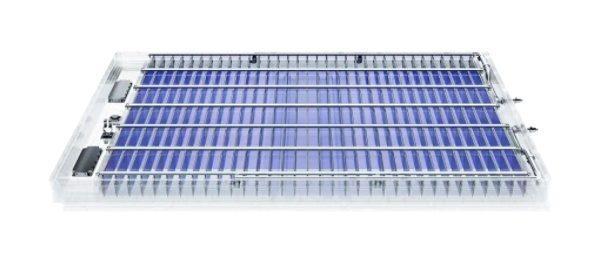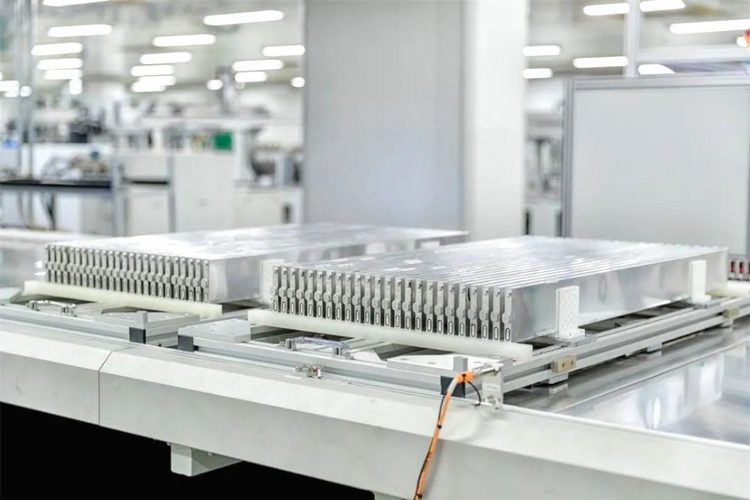Recently, the European Parliament voted to adopt the European Battery Regulation. According to the legislative process of the European Union, after approval by the Council of the European Union, this regulation will enter into force after 20 days and be enforced in the EU member states.
It should be emphasized that the European Battery Regulation will be the first legal document in the world to regulate the entire life cycle of batteries. Like the very aggressive emission regulations on internal combustion engines, the EU legislation on batteries is also very cutting-edge: both from the point of view of carbon emissions, and from the point of view of promoting the recycling of resources, have put forward clear requirements for battery companies.

Specific requirements of the new EU battery regulation
The impact of the new EU battery regulations is mainly seen in the provision of mandatory carbon footprint declarations and labeling, the setting of minimum recycling rates, and material recovery targets, as well as the need for manufacturers to provide battery QR codes and digital passports. Specifically, the new EU battery regulations include:
Mandatory carbon footprint declaration and labeling. Rechargeable industrial batteries, LMT batteries and EV batteries with a capacity of more than 2kWh are required to provide carbon footprint declaration and labeling. Battery companies need to calculate the carbon emission data of each life cycle stage according to the relevant standards, and the EU may also put forward new requirements for battery companies to reduce emissions based on the relevant carbon emission data, in order to further strengthen the EU's green carbon emission barriers, and build trade barriers for potential exports. Setting minimum battery recycling rates and material recovery targets. According to the new EU battery regulation, it has set aggressive recycling targets for batteries and the main raw materials in batteries.
Among them, portable batteries need to reach 45% in 2023, 63% in 2027, and 73% in 2030; light transportation batteries need to reach 51% in 2028 and 61% in 2031; lithium battery materials need to reach 50% in 2027 and 80% in 2031; for metal materials in other batteries, the EU has also made more detailed requirements. 80%; for other metal materials in batteries, the EU has also made more detailed requirements. Since the bill came into effect eight years later, the new battery needs to contain recycled cobalt content of 16%, recycled lead content of 85%, recycled lithium to 6%, recycled nickel to 6%; since the bill came into effect 13 years later, the new battery needs to contain recycled cobalt content of 26%, recycled lead content of 85%, recycled lithium to 12%, recycled nickel to 6%. to 121 TP3T, recycled nickel to 151 TP3T; and provide a battery QR code and digital passport. Under the new battery requirements, manufacturers are required to disclose information about the capacity, performance, usage, chemical composition, and recyclables of the battery, and the relevant information can be easily accessed through the QR code. In addition, each battery should have a digital passport to facilitate the relevant regulatory agencies to pick up a common information interaction system for tracing and regulating batteries.
It should also be pointed out that the relevant requirements, not only for the export of the EU's domestic battery companies have a small impact, for the local factory in the EU Chinese battery companies will also have a certain impact. As soon as possible to meet the relevant requirements of the EU, is to ensure that the future can continue to get new orders in the EU market is the key.

European electrification market looks promising
In 2022, EV sales in the EU exceeded 1.1 million units, an increase of 28% year-on-year, accounting for 12.1% of total new car sales for the year. of which Norway set a new record of four pure electric models for every five new cars sold.
Meanwhile, in the EU market, the market share of hybrid vehicles is 26.9%. With the EU formulating a comprehensive ban on the sale of fuel vehicles, including hybrid models, by 2035, the sales of electric vehicles within the EU market will continue to climb, so the demand for batteries will further increase.
In 2019-2022, the installed share of Chinese batteries in Europe continues to increase, respectively, 11.8%, 16.8%, 22.6%, 34%.At present, Northvolt, a local European battery company, is still in a start-up stage. For battery companies, from the completion of the product design to the final start of commercialization needs to go through a long journey.
Korean battery companies in the European market deep plowing, although the ability is not weak, but it is more focused on ternary lithium-ion. From the current market feedback, domestic battery companies are more specialized, both cost and safety of lithium iron phosphate battery is undoubtedly more favored by consumers.
This can be seen from the fact that Tesla has chosen Ningde Times' lithium iron phosphate battery and BYD's blade battery for its locally produced Model Y in Europe. Therefore, considering the stronger system capability of Chinese battery enterprises, China's power battery market share in Europe is expected to continue to increase in the future.

Chinese battery companies need to pay close attention
At present, the domestic automobile market, both vehicle and battery have been overcapacity. Looking around the world, the EU is a more friendly market for new energy vehicles.
From the data point of view, according to the data released by the General Administration of Customs, in the first quarter of this year, China's lithium battery exports ranked the top five destination countries are the United States, Germany, South Korea, the Netherlands and Vietnam.
Among them, exports to Germany and the Netherlands of the two EU countries amounted to 27.297 billion yuan, more than the United States of 22.47 billion yuan, in fact, has been the largest destination for Chinese battery companies exports. With the landing of the U.S. anti-inflation bill, the future export of U.S. batteries will be extremely decline.
In addition, the domestic, including Ningde Times, Guoxuan Gaoke, AVIC lithium-ion, etc. have plans to build local factories in the EU, in order to better win orders from local OEMs in the EU. Therefore, these local battery companies that have built factories in Europe need to pay more attention to the new battery regulations.

The EU's new battery regulations, in addition to the need to cause our battery enterprises attach great importance to, the relevant regulations are also worthy of great attention from the domestic legislation and administrative agencies. The EU is relatively leading in environmental protection, we can also learn from the EU for the various requirements of the battery in some good content, in turn, to guide and promote the transformation and upgrading of the domestic battery enterprises, in order to bigger and stronger and cultivate a number of globally competitive battery enterprises in the legislative aspects of the reserve.
(Source of article: AutoWarp.com)
[Zhongshun Xinneng Marketing Department February 21, 2024 Responsibility: Xiao Zheng]
Reprinted for the purpose of transmitting more information, and does not mean that we agree with its views and is responsible for its authenticity.




